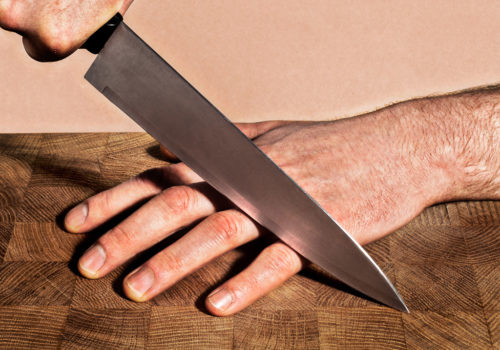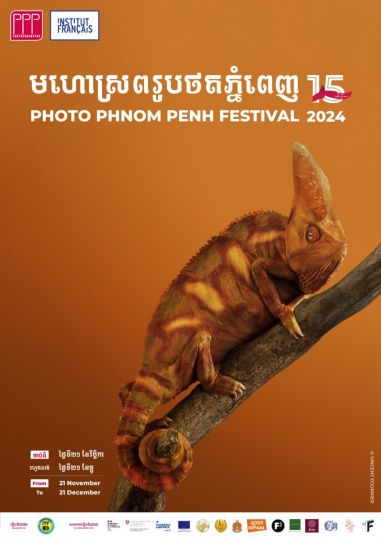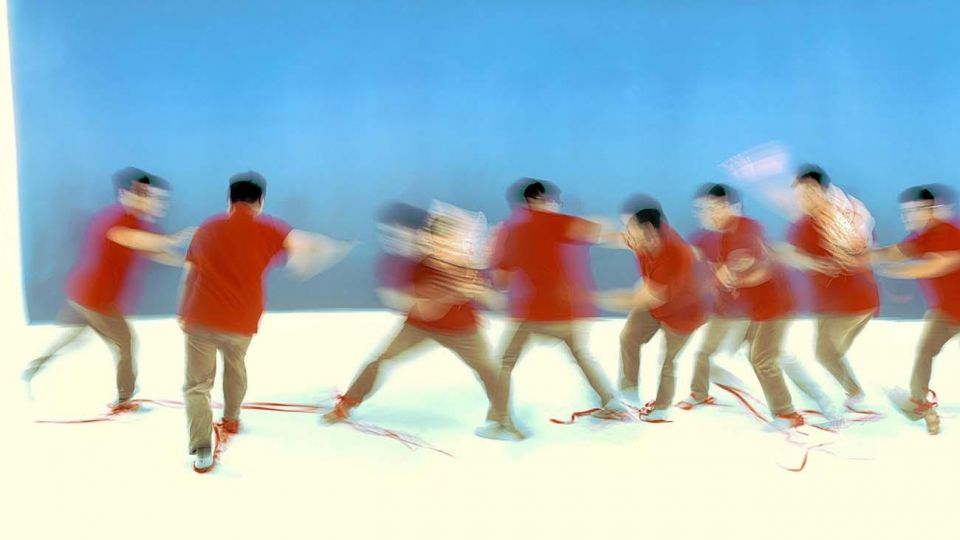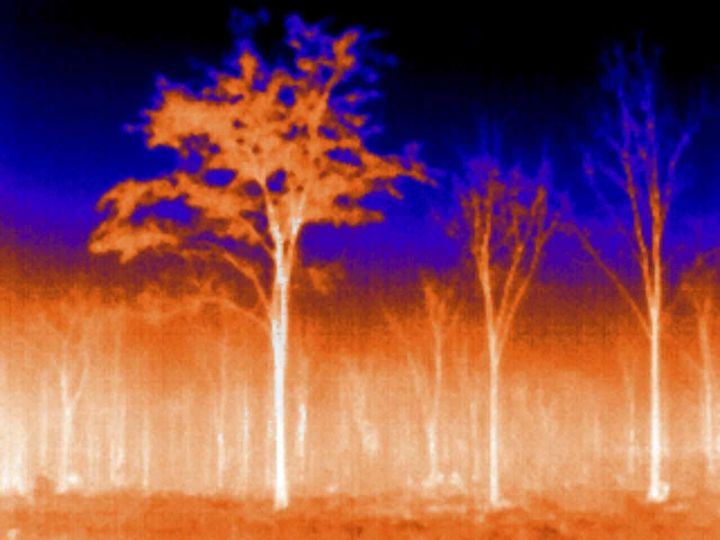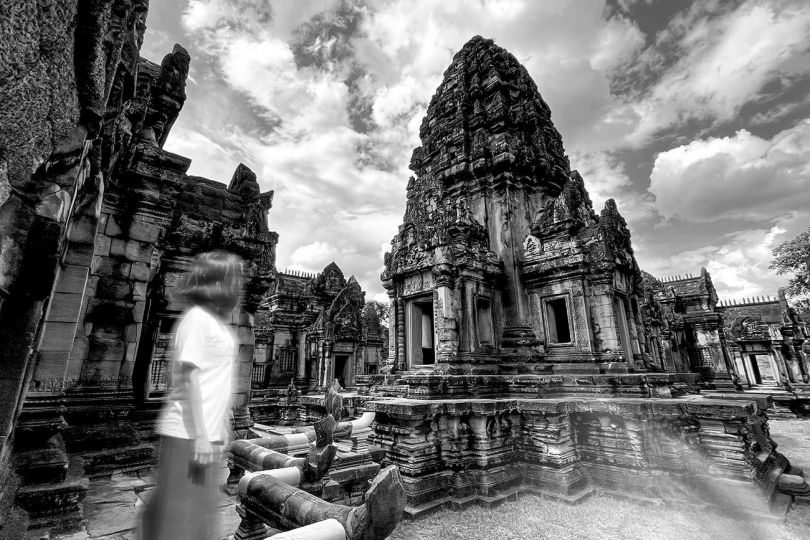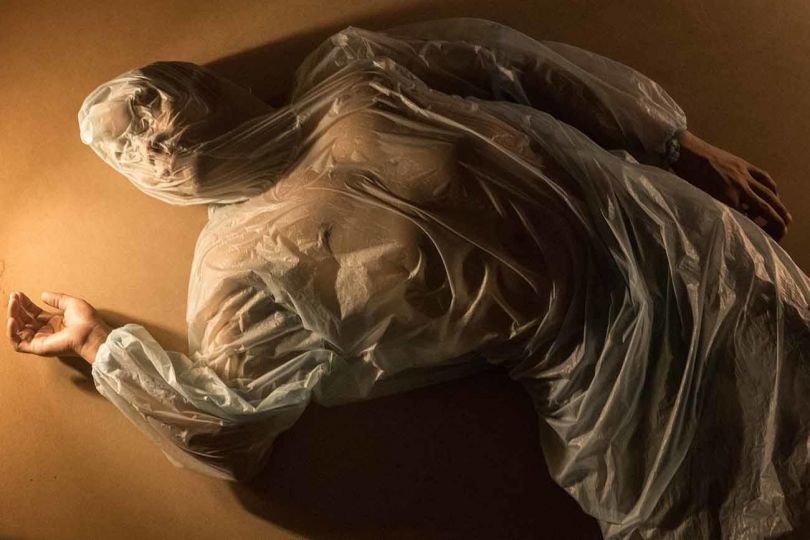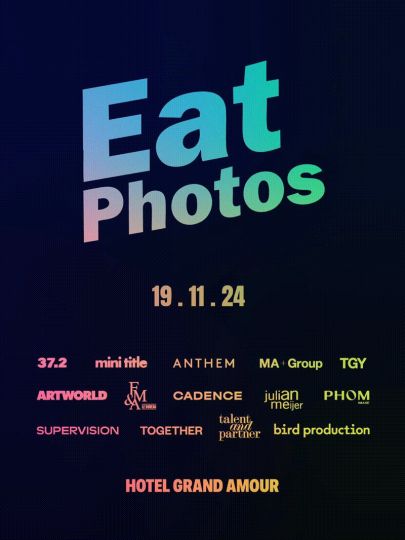For this fifth edition, the Circulation(s) festival invited 14 young European photographers. Led by the Association Fetart, these are some of the favorites of the team. The work of these artists appears in exhibitions and installations at the festival.
Invited Artists 2015 :
– Hellena Burchard (France)
This work is a series of six pictures. Its starting point is a daily reality, an exposed sleep, that of the homeless. This question of rest in a hostile environment affected me deeply as soon as I arrived in Paris. It is both an intimate and public work, which results from a reflection, that of the photographic action as a recorder of common realities.
By creating a shifting from the street to the gallery, my wish was to create a friction zone between the crossed realities that are these two exhibition spaces. To question the viewer about what he sees on a daily basis but as well to commit one’s body, bound to slowly decay in the current pieces. That’s how I like to position my work, like a dialogue about the status of the image and of the photographic action, by playing with notions of scale and layout.
– Nicoò Degiorgis (Italy)
In Italy, it’s utterly difficult for Muslim to exercise their collective Islamic religious rights, even more in the north-east of the country, stronghold of the Northern League, a political movement that has gained mainstream political popularity through its campaign against immigration.
This project investigates the realities of Islamic life in a hostile country that counts only two official mosques for more than one million Muslims. The aim of this work was to discover and document the makeshift places of worship, often based in improvised hangars, basements, garages and old supermarkets in the industrial areas of the north-east of Italy.
– Philippe Dollo (France)
« Phillipe Dollo offers us a search for this civilization swallowed by collective amnesia, mistreated by History’s bumps, and he is patient enough to let us discover step by step, almost by transparence, the outline of this presence torn down from the heart of a contemporary Europe struggling with itself and with the ghosts of the past which are ready to reappear. » Sébastien Durrmeyer
– David Fathi (France)
In our collective psyche, the nuclear age corresponds to the explosion of two atomic bombs : Hiroshima and Nagasaki. However, since 1945, there have been more than 2000 nuclear explosions in the world. Since the end of World War II, the nuclear powers have methodically bombed their own territories. Self-mutilation in the name of self-defense.
This body of work has as a starting point some little known anecdotes about nuclear testing programs. By mixing archive pictures, satellite images, pack shots and photographical road trips, the photographer contextualizes a story, between the hair-rising investigation and the absurd farce.
All that is documented here is true but seems to be a poor fiction. Through this work, David Fathi enlightens us about the world in which we think we are living and the one we have actually built.
– Dionisio Gonzalez (Spain)
The photographs taken of Venice are the result of prior research and investigation work which determined the exact locations of the absent architectural projects of famous architects (Frank Lloyd Wright, Le Corbusier, Louis Khan, Aldo Rossi). As a result they are initially photos of routing, of performance and positional precision ; their visual writing is the basis for their georeferencing. Afterwards the buildings were raised three-dimensionally using the existing drawings and plans. It’s a work of integration, of replacement, that constitutes a possible Venice or a Venice that could have been. This series of images contains the spirit of redress, of restitution and may be an archive of a possible reality.
– Audrey Laurans (France)
Family pictures are on sale in second-hand stores, car boot sales and even on the internet. We can then wonder why the owner of these pictures wants to get rid of them and on the other end what motivates a buyer to acquire pictures of strangers.
Desecrated, the pictures of the ancestors are exposed to all, in this window, far from the private albums and from the intimacy of the family circle. As they have become a consumer good as much as a cereal bar, these pictures reveal the universal potential of family pictures. They are aimed at everybody.
It is thus possible to make one’s own family of potential ancestors from a selection of great grand-mothers, great-uncles or imaginary cousins.
– Grzegorz Loznikow (Poland)
“Masters” is a series of collages made from an album of the 1936 Olympic Games, found in the artist’s family home. It was owned by a german family who lived in the house after the Second World War. Through this series, Grzegorz Łoznikow re-interprets the pictures of a family album by desecrating the pictures of the Nazi athletes, national heroes of the new rising German party.
– Jan Maschinski (Germany)
The series is playing with the thin line separating good taste from bad taste. It shows us familiar things put under a new light. Every picture consists of a quick intuitive idea inspired by the flood of digital images we are recieving daily from the internet and other mass-medias. Choke uncovers the concept of playful photography as an important area of creative process.
– Dita Pepe (Czech Republic)
What would it be like if I had been born in another place, differently, to different people? What would I be like today ? What would my life be like ?
For me, photography is a means of communication not only with myself but also a means by which I talk to people, ask questions, offer answers, respond, feel, experience, and am active. For me, photography is a way of searching.
The first photographs from the Self-portraits series were made with people from my surroundings, with women who attracted me in some way, by their appearances, their lives, their behaviour, or their views. Later, I made self-portraits with men and families. I am interested in their ways of life, their values.
– Camilla Pongiglione (Italy)
Since her childhood, Camila Pongiglione associates the heart with her father, a cardiologist. When he has a heart attack in November 2012, Camila becomes aware of the fact that the heart is a complicated machine that moves passions. She starts drawing it under the shape of anatomies, to show its malformations and associates pictures with a metaphorical aim to it. Through this book’s design, she tries to materialize what happened to her father and what happened in her at this moment.
– Jan Rosseel (Belgium)
In the beginning of the 1980’s, Belgium was shaken by a series of violent robberies, committed by a group of unknown criminals referred to as “The Brabant Killers”.
Overall, twenty-eight people lost their lives. My father was one of them. This period of terror and violence will remain one of the darkest pages in Belgian history. The case will be closed in 2015. The serie is largely based on an interpretation of witness accounts, police reports and interviews linked to this period. It questions the reliability of our personal and collective memory. Composed of photography, video and objects, the project is based on long-term research, investigations and interviews, always referring to the notion of memory and the complexity of witness.
– Aldo Soligno (Italy)
Everything changed In Uganda on the 24th of February 2014, when the anti-gay law was approved. Stays S., 30 years: “Now I live in constant fear that someone will knock on my door and arrest me, or worse, make me disappear”. This law entitles authorities to sentence anyone accused of homosexuality of penalties that can go up to life imprisonment. After approval of the law, all major tabloids in the country published hundreds of photographs of suspected homosexuals and gay activists under the title “Hang them.” For this project, the photographer asked the Ugandan LGBT activists to pose from behind and up against the light, creating what could be a hypothetical negative of the images published as defamatory by the tabloid press in the country.
– The Cool Couple (Italie)
The project seeks to reveal instances of forgotten pasts through collection and redissemination of historical information and the use of photography, drawing, installation and archiving tactics. In Approximation To The West, the artist’s address a series of events from the end of WWII, when Cossacks from Caucasus, allied with the III Reich, invaded the Carnia region in Northern Italy. The occupation lasted until April 1945. The occupiers were then traded by the Allied forces in exchange of hundreds of thousands of British prisoners of war held by the Soviets. The photographs are presented alongside documents and supporting material contextualizing the incident.
– Catrine Val (Germany)
In “Philosophers”, I examine the loss of connection to nature in our modern, technically driven world. A longing for nature, as a fixed reference point and an intact romantic worldview in which man and nature are in harmony, is facing an accelerating demise in our fully digitized age. By referring to the external visual similarities of philosophers, a reference to the historical philosopher, which incorporates his life and work, is made.
The concept of “philosophers“ is a quest for a new terminology and a new grammar of thinking about contemporary art and focus on a new meaning of vision and gender.
FESTIVAL
Circulation(s) #5
From January 24th to March 8th, 2015
CentQuatre
5 rue Curial
75019 Paris
France
Free Entrance
M° : Riquet or Stalingrad
Tuesday – Friday 1pm – 7pm and Week-end 12pm – 7pm

